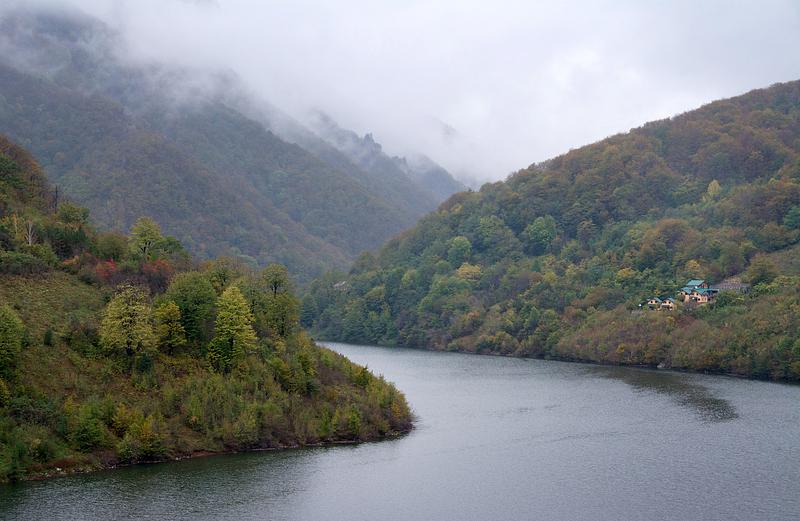Travel planner: Butterflies and black pines in the Domogled-Cerna Valley National Park

A while ago, I started a journey – on paper – through the Caras Severin county. We discovered the unique Bigar falls and the amazing area where Danube enters Romania. It's time to have a look at a place called the Domogled – Cerna Valley National Park.
Domogled – Cerna Valley National Park is shared by three counties: Caras Severin, Mehedinti and Gorj. This National Park is actually located at the cross between two Romanian historical regions, Banat (Caras-Severin county) and Oltenia (Mehedinti county and Gorj county). The Domogled – Cerna Valley National Park is one of the recent Romanian protected natural beauties. The park was created administratively in 1990. It covers 61,211 hectares and most of the area is protected. From a geographical perspective, it covers the Cerna river basin from the river’s source and continues to the junction point with the Belareca River. The Cerna river basin is surrounded by Godeanu Mountains and Cerna Mountains (on the west side) and Valcan and Mehedinti Mountains (on the east side). The administrative center is the city of Baile Heculane, (south) which is, together with Baia de Arama (east), Closani village ( north east) and Jiu –Cerna pass (north) one of the main access points to the park. Tourists can reach this area by car on national road DN6, European road E70 – 172km from Timisoara to Baile Herculane, and 387 km from Bucharest to Baile Herculane. It's also possible to get there by train (Baile Herculane railway station) or by airplane, landing at Timisoara Airport.
Three quarters of the national park is covered with forests, where the trained eye can find trees like beech, spruce, fir, elm, sycamore, ash, hornbeam, quaking asp, hazel, rowan and European spindle. This very rich variety of trees is the result of the influence of the Mediterranean-like climate of the Banat area. The natural beech forests with “Fagus sylvatica” and “Fagus Orientalis” are appreciated as one of the unique attractions of the national park. There's also a very large variety of butterfly species to be seen, which makes the area very special for Romania. There are more than 1,500 unique butterfly species in Romania. The Domogled – Cerna Valley area has one of the most amazing landscapes, with the Cerna gorges, the forests and the Domogled cliff wall among the highlights. In this region, the indigenous Banat Black Pine of is protected by law. The flora in the park includes more than 1,000 species, including rare Balkan and Mediterranean species. On the fauna side, apart from the amazing butterflies, there are birds - with Mediterranean and Indo-African origins) reptiles, amphibians and wild mammals likes bear and lynx. Travelers interested in customs and local traditions can visit the village of Cerna, which is located inside the national park, as well as a few hamlets (Prisacina, Poiana Lunga, Tatu, Inelet). To travel between these locations, the tourists can use, as the residents do, the walking path, horses or donkeys. The main occupation of the inhabitants is sheep and cattle breeding, which is reflected in the local architecture, ethnography and folklore. The tourists can see local crafts, traditional clothing and the folk customs. They can listen to the folk music specific to the Banat area and see the traditional dances. One important celebration specific to the area is nedeea, a festival of traditional music and clothing which takes place usually in August. Once accommodation in the area is secured – plenty of old fashioned boarding houses to choose from, there's the food. I'd recommend trying some of the following: ciorba soured with lemon, soups with home made noodles, iofca with cabbage, paprikas, traditional Banat sarmale, pudding called Varga Beles and drinks (tuica). After visiting the Domogled-Cerna Valley National, the traveler can go a bit further north and find another natural jewel of Romania, the Retezat National Park. We'll talk about it in our next article.
By Mariana Ganea, Guest Writer
(Opening photo: Rechitan Sorin | Dreamstime.com)















